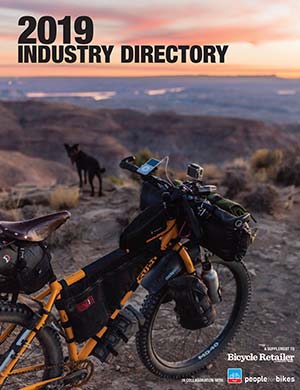Editor's note: The following article appeared in the March 1 issue of Bicycle Retailer & Industry News.
LYON, France (BRAIN) — The bicycle industry may not be as sexy as social media or biotechnology, but Patrick Keating believes it offers plenty of opportunity for investors. Keating, an American financier who lives in France, founded what he hopes will be the first venture capital fund dedicated to cycling.
Called Vélo Capital Partners, the group is working to raise €50 million to €100 million ($66.9 million to $132 million) for its first offering, called the Innovation Fund 1.0. Keating said he should know by the end of the first quarter whether there is enough interest from potential investors to proceed.
The global cycling industry is a $50 billion to $60 billion business, Keating said. Yet apart from such behemoths as Shimano or SRAM, “everybody else is pretty undercapitalized, which means they can spend little or nothing on R&D or innovation. And there’s a lot of copying going on in the industry,” he said.
Until now, no venture capital fund has ever focused specifically on this industry, Keating said.
“There are plenty of reports or people you can talk to about [investing in] social media or a new medical device or biotech drugs,” he said. “But most people don’t know anything about the business of cycling.”
Because the industry is little known in financial circles, Keating and his team prepared a “massive PowerPoint” presentation that delves into the global cycling industry and the history of the bicycle, even discussing the American “bicycling boom” of the 1890s.
The fund is targeting traditional venture capital investors, which can include pension funds, insurance companies and high-net-worth individuals.
"Out of 200 to 300 investors, you maybe get 10 or 15 who are interested, and out of those 10 or 15 you get maybe five or six [who invest],” he said.
Most in the industry can rattle off the benefits of cycling, from reducing traffic congestion to battling obesity. But Keating is stressing to potential investors that developing government policies, especially in Europe, could provide a financial catalyst for the industry.
“In Europe, they’re trying to go from a 7 percent [cycling modal share] for commuting to 15 percent by 2020, and in the U.S. from 1 percent to 5 percent by 2020,” Keating said. “If they can do that, in the U.S. it means the industry will go from $5 or $6 billion to $30 billion, and in Europe, from €9 billion [$12 billion] to €18 billion [$24 billion].”
He added, “Instead of being single-digit growth, it could have low-double-digit growth. So that’s what we call the ‘wow’ factor.”
Vélo Capital Partners anticipates investing about 60 percent of its fund in Europe, 30 percent in North America and 10 percent in Asia.
Ideally, the fund would make 10 to 15 investments of €1 million ($1.3 million) to €3 million ($4 million) each, saving money for follow-on investments.
“There’s a lot of opportunity, mainly in components and cycling equipment. And there’s certainly new concepts in retailing that are popping up all over the place,” he said.
Venture capital and other outside financing are not unknown in the industry. In 2008, for example, SRAM sold a 40 percent stake for $200 million to Lehman Brothers Merchant Banking, and is now preparing for an IPO.
Strava, the wildly popular social media cycling and running app, and Fallbrook Technologies, the parent company of NuVinci hubs, have also benefited from venture capital financing.
Keating is a Nebraska native who bought his first bike—a Raleigh three-speed—after selling livestock he raised on the family farm. He’s been involved in finance and venture capital since the 1980s. He worked for Hambrecht & Quist, which famously underwrote IPOs for such high-tech firms as Apple Computer, Genentech, Adobe, Netscape and Amazon.com.
He moved to Istanbul, Turkey, in 1998, eventually overseeing Turkey’s largest venture capital fund, and has also advised semiconductor companies.
Through it all, he’s been an avid cyclist, starting as an amateur racer in the U.S. and even riding his mountain bike through the hills of Istanbul.



